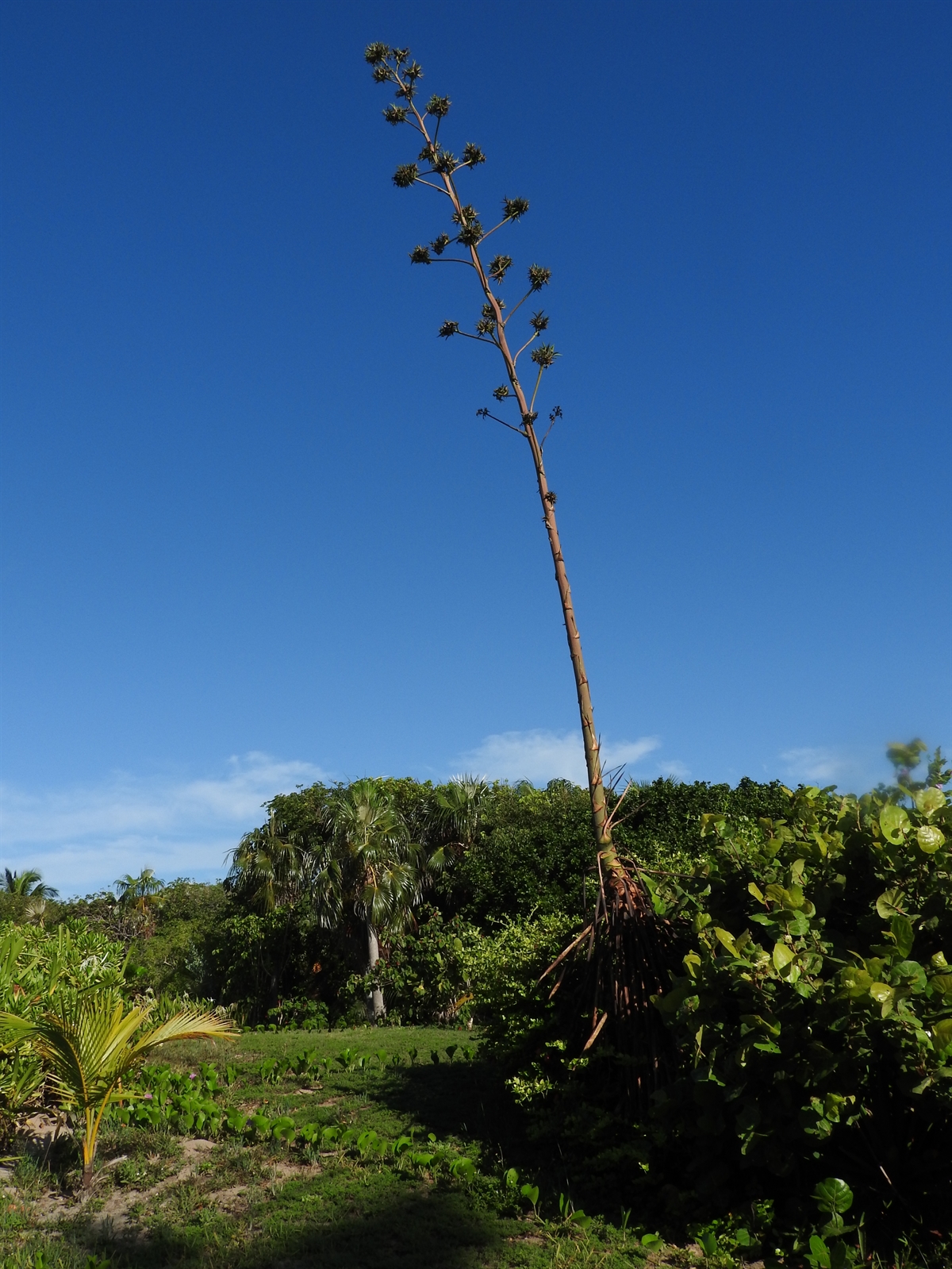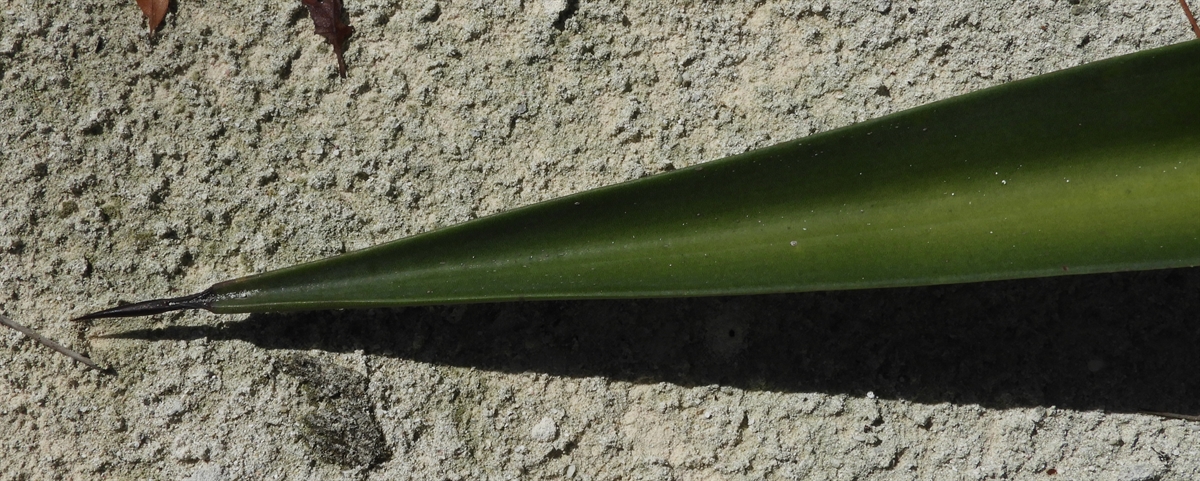Habit: Agave sisalana grows as an acaulescent shrub. The leaves are arranged in a basal rosette producing new leaves from the center every year. The leaves are dark green, up to 120 cm in length and 9 cm wide. The leaf apex is modified into a stout spine and the leaf margin is entire (occasional prickles). The main plant suckers extensively from its base when the parent plant dies off.
The complete, prefect, actinomorphic flowers are arranged in a terminal panicle to 6 meters in height. The calyx has 3 unfused green sepals. The corolla has 3 yellowish green to bright yellow, unfused petals. There are 6 unfused stamens. The superior ovary has 3 locules and numerous seeds. The fruit is a light brown capsule at maturity. The plant uses the entire apical meristem during flowering and will die off after the fruits become mature. The seeds will germinate while still attached to the parent plant.
Habitat: Agave sisalana occurs as a naturalized escapee from past cultivation along roads and in old fields.
Distribution: Agave sisalana is NOT native to the Lucayan Archipelago. It does occur throughout all island groupings in the Lucayan Archipelago as well as all new and old world tropical and subtropical regions of the world as a cultivated species and an escapee. It is native to the Yucatan peninsula.
Medicinal/Cultural/Economic usage: Agave sisalana has long been grown as a source of fibers for rope and clothing. In the Bahamas it is often used in plait and straw work as well as to treat cardiovascular problems (jaundice).



